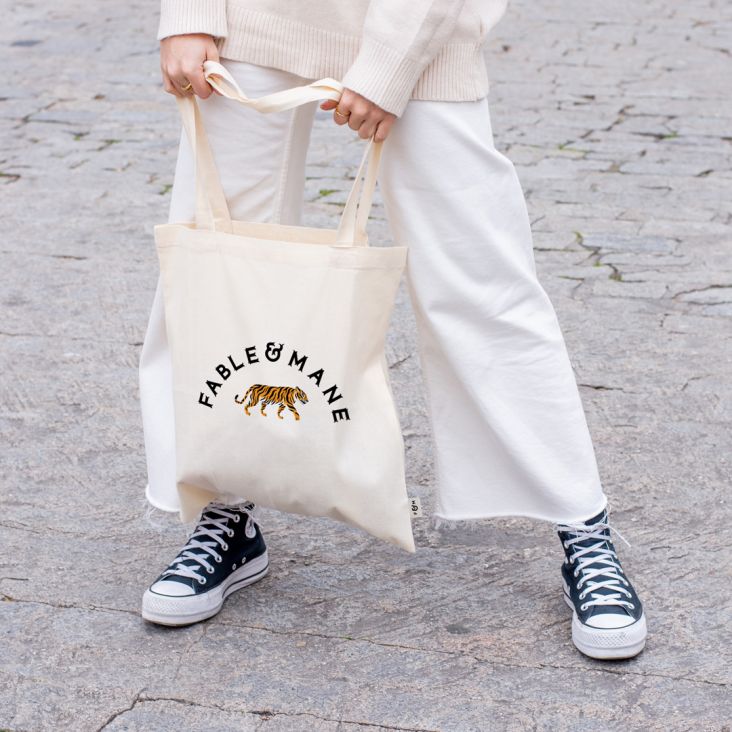15 must-read tips on managing client expectations
The dream of landing a new client can sometimes turn into a nightmare. When that happens, it's natural to blame the client. Yet, it's often possible to stop such relationships from turning sour by improving how you manage client expectations from start to finish.

Image licensed via Adobe Stock
That's easy to say, not so easy to do. But if you follow the advice of others who've learned how to do it the hard way, you can get there faster and easier. So we've canvassed the creative community for their tips on managing client expectations and share them here in this article.
Read on to discover our top tips on how to keep clients happy throughout every project – from costing up to delivering the work.
1. Be transparent and offer options
The most important point of managing client expectations comes at the very start. Work is time and money. So if someone comes to you and wants an all-singing, all-dancing creative solution for next-to-nothing, be totally transparent with them and explain why they can't afford it. Talk through the work involved and suggest alternative yet cheaper solutions.
Most people will appreciate your forthrightness. As the writer Luc Benyon puts it: "Clients appreciate openness and honesty, so be polite but firm, and explain your reasons."
Illustrator and graphic recorder Laura Sorvala concurs. "Being transparent and honest is key for me," she says. "I make sure to ask enough questions from a client to check we are on the same page, then offer clear options and always update or flag up any issues or considerations. This also links to empathy; especially now, during the pandemic, people just have a lot to deal with, so it's good to be understanding both ways. Be a nice human with healthy boundaries."
Tread carefully, though. Because those clients who want something they can't afford, yet go with a more affordable option, could potentially demand that they get the same full solution further down the line. People can be sneaky, so make it clear that any additional work will be an extra cost.
2. Don't take a brief that doesn't sit right
What can be even more of a problem than sneaky clients, though, are clients who don't really know what they want. So digital strategist Ayesha Ambreen stresses the importance of getting to know your client and their business intimately. And if their instructions don't sit right, push back. "Don't rely on the brief; rely on talking to the client," she advises. "If the brief is vague, don't hesitate to ask questions."
Writer Sarah Farley agrees. "Take a little time to get to know your client and what they need so you understand what you need to do to help them," she says. "Then agree together what you'll do, when you'll do it and how you'll deliver it. If something isn't possible or reasonable, explain why and suggest alternatives."
If you don't, you're likely to end up in a situation like that recently experienced by art director Marc Diamond. "I had a client who didn't want to do the work on the brief," he explains. "They ended up frustrated – with me – because they had no idea what they wanted. If your spec. is vague and undefined, then that's exactly what you're going to get."
3. Set clearly-defined goals
You can't manage expectations without establishing what the project's end goals actually are. So immediately set goals before you embark on any new project. It ensures you and the client are on the same page and working towards an agreed outcome.
"You should always look to set realistic expectations at the start of the working relationship," says Ben Veal, founder and MD at Second Mountain Communications. "Make these specific, achievable and, ideally, measurable too. Don't overcommit or make promises you can't guarantee you can deliver on just to win new business."
4. Set clear boundaries
There's no point in being clear about what you are going to do if you're not equally clear about what you're not going to do. In that light, writer, author and photographer Marie Gardiner stresses the importance of "setting polite but firm boundaries, so there's no mission creep or expectation."
That particularly applies to the expectation that you will reply to queries outside of work time, she adds. "With more people working from home at the moment, this is a biggy because people expect you to be available 24/7."
5. Get the timings right
Clients often expect everything they ask of you to be done yesterday… while everything you require of them can take an age. For that reason, timings must be at the heart of your initial agreement.
As Emily Jones suggests, "Create a timeline for projects – collaboratively – with delivery dates for each stage, and when you expect feedback. Build your own contingency into this, of course."
Illustrator and comic artist Russell Taysom adds that you shouldn't necessarily kill yourself to do things as fast as possible. "I told a client recently that I could do something quickly, but I'd rather do it well," he notes. "It probably sounded a bit annoying: I just blurted it out on a Zoom meeting which I always find nerve-racking and end up being weird. But afterwards, I thought, it is true!"
6. Pricing things up: fixed or hourly?
When pricing up a project, you have to consider whether a fixed price or hourly rate would be more suitable. Fixed priced jobs are for those projects which are relatively straightforward, and you can confidently guess how long the work will take. But if you come across a project that has too many unknowns and is too vague, it's wise to suggest an hourly rate. You'll find more advice in our article How to set your freelance rates.
7. Be pessimistic, not optimistic, when costing projects
Everyone likes to strike a bargain, which is why most clients will try and haggle you down on price. So when costing up projects, go that little bit higher. Not sure what to charge? Figure out how long you think it will take and then double it – a client will most likely take a third off your estimate, but you'll still have enough room for contingencies.
8. Put everything in writing
Before you go ahead on any project, put together a comprehensive proposal, listing all the things the project will and won't involve. Make it clear what your client will and won't be getting for their money.
For example, if you're building a website but doing nothing else, ensure you put in a clause somewhere that states: "All content to be supplied by the client, the project is for web development work only". Or if you're a graphic designer (and boy! do you guys have it wrong sometimes) and you're designing a logo, state: "This cost includes X amount of logo concepts only. If the client does not like anything we suggest, it will be an additional cost to create more concepts".
Then email the proposal to the client and get them to reply saying that they're happy to go ahead. It means if you come across any problems in future, you can refer the client back to the proposal and the email they sent, showing their written consent.
Graphic design studio The Modern World follows this philosophy and offers the following advice. "Be super-clear what you are delivering, as well as what you are not, from the outset of a project. Document this and share with the client, even if your initial discussion is over the phone and you think everyone's on the same page.
"Agree on timescales and also what is required client-side to meet deadlines. Projects are collaborative; everybody needs to hold up their end. Track and review at key milestones, and don't be afraid to raise it if things are starting to slip. Lastly, pick up the phone and talk."
9. Draw up a contract
It's hugely advisable to use contracts with every project. Contracts should include an overview of deliverables, i.e. what you're going to provide as a service, as well as a schedule, cancellation clauses and a breakdown of costs. Contracts don't have to be long-winded; they can be concise and still have the same effect. Not sure if your contract is up to scratch? Hire a solicitor to sort a general template contract for you. It might be expensive, but it could just save further expense and hassle in future.
10. Make it clear about what happens if things change
With your initial plan and contract communication, be upfront about what happens if things change (these are often referred to as 'change orders'). It avoids any drama further down the line. For example, you might want to make it clear that the deadline will be moved back if certain stages of the project are delayed – with approvals taking longer than expected, for instance.
Every project suffers from the odd setback. Just explain this before any work begins, and they'll be easier to deal with should delays occur. "Using change orders has been massive for me," says graphic designer David Dooley. "They're a really useful way to address the extra scope and have been really useful for politely and firmly letting a client know when something will cost extra."
11. Build trust by setting expectations about how you work
To manage expectations successfully, build on the trust you have with your client by providing some background on how you operate. Provide a list of promises that you will honour during the work. For example, explain how you will always respond to any email within X hours – offering reassurance that you'll always be around. Or perhaps you could stipulate how you'll never send a surprise bill; that any additional work will be costed up separately for them to consider.
If you provide the client with a better understanding of how you work and what you promise to do, the trust will increase, and their expectations will be better managed.
"It is best to layout expectations and perimeters at the start of the relationship," advises Dani, a content writer at This Florida Life. "Then revisit every so often as needed. A Code of Conduct goes a long way in formalising expectations and shows professionalism."
12. Stay in constant touch
Keep your clients happy by staying in continuous contact with them. Don't just email all the time; pick up the phone! It's a much more effective way to communicate. Reassure them that they are the most important person you're working for and that their project is ticking along nicely.
If you want to reassure them, show them progress reports and see them face-to-face whenever possible. If you stay in regular contact, your client will be happy and confident you're doing a great job. There is no such thing as over-communication in business.
As graphic designer Liz Moseley says: "Communicate as much as possible before you get started and throughout so that they know exactly where they stand through the whole process."
And that means getting as specific as possible. "Being extremely clear with deadlines, timescales and workflow, like what is being produced and why, and what they will need, is a must," says designer Gary Waiman. "I have been burned badly by this recently, and a working relationship ended badly."
13. Listen to your gut
If you have a gut feeling that something on the project isn't right, speak up! Anticipate what the client might also be thinking before they say anything. If you're worried that you've not spoken to the client in a while, pick up the phone. Always anticipate when things might not be going to plan and address them immediately.
14. Under-promise but over-deliver
Want to impress? Go above and beyond expectations to ensure the client is happy and the project is as successful as possible. Don't just do the bare minimum. 'Wow' the client by delivering more than what they were expecting, and before the allocated deadline. It means they won't hesitate to hire you again and might even recommend you to others.
15. Dodge bad clients from the outset
One final point: if you have a real nightmare client (and we've all had them), none of this will probably work. So it's vital to spot the warning signs and dodge them from the word go.
If they say anything like: "I want you to create the new Google, but as cheap as possible!", "It'll only take you a day, won't it?" or "I'm not sure what I want, can you decide for me?" then that's a pretty good indication that you should run away, hide in a cave for several years and not come out until you're pretty sure the coast is clear.






















